How a Suffolk Breckland farm has transformed the health of its soils
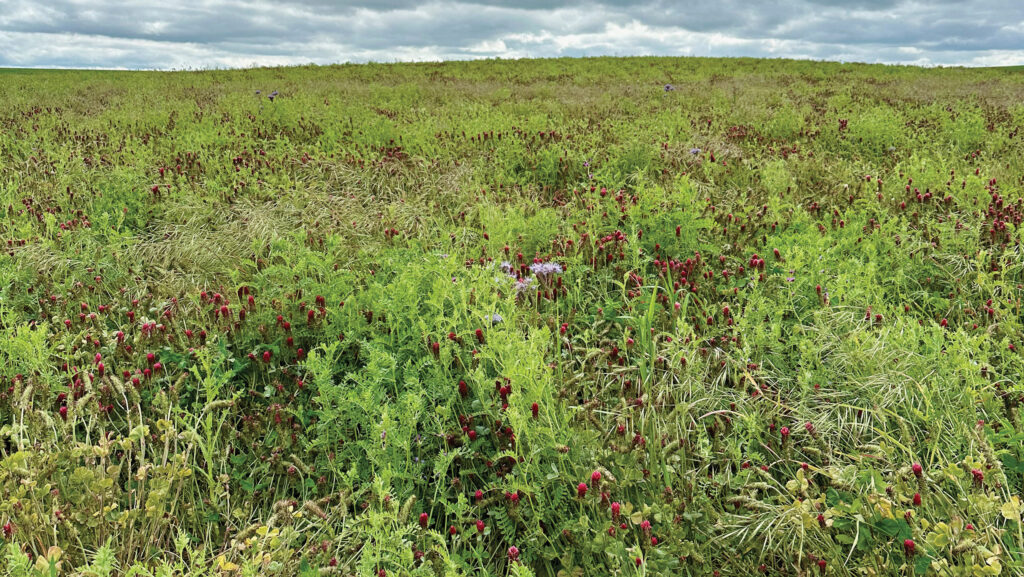 © Mike Abram
© Mike Abram With cereal yields dropping by 50% in some cases compared with 2003, James Bucher made the decision to completely change the way he was farming the family’s 600ha on the Suffolk/Norfolk border in 2018.
From the 1960s to around the mid-1980s, James’s father ran a dairy enterprise, but with high workloads and low returns, like many farms in the Brecks with a sandy loam soil type, he turned to renting land out to vegetable and potato growers, while on remaining land growing wheat, barley and sugar beet.
“Over the 30 years we did this until 2018, we saw massive degradation of our soils,” James says.
“Our yields had dropped off a lot following intensive root cropping with either sugar beet or vegetables. On some light land roots crops were every other year.”
See also: 3 risks to assess before drilling winter wheat early
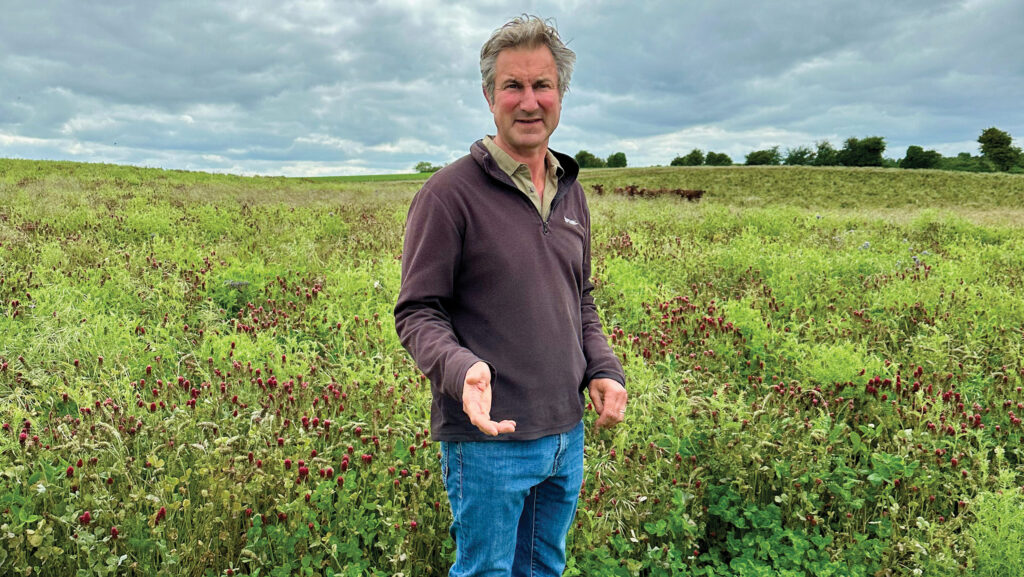
James Bucher © Mike Abram
Establishment and harvest of those root crops had contributed to a heavy toll on his soils.
“Sometimes we were ploughing twice a year, once before the root crop and then afterwards to try and achieve a reasonably level seed-bed.”
Recognising that he wanted to improve the health of his soils he initially implemented growing cover crops in front of spring crops starting in 2018.
While that was fine in front of spring barley and sugar beet, and for some of the vegetable producers, the potato grower preferred bare soils.
“We stuck with it for a couple of years and then thought this wasn’t working, and gave them notice, as well as calling time on growing sugar beet,” James recalls.
“We just wanted to grow crops we could harvest in the summer when the ground was at its driest and be in total control of what we were doing.”
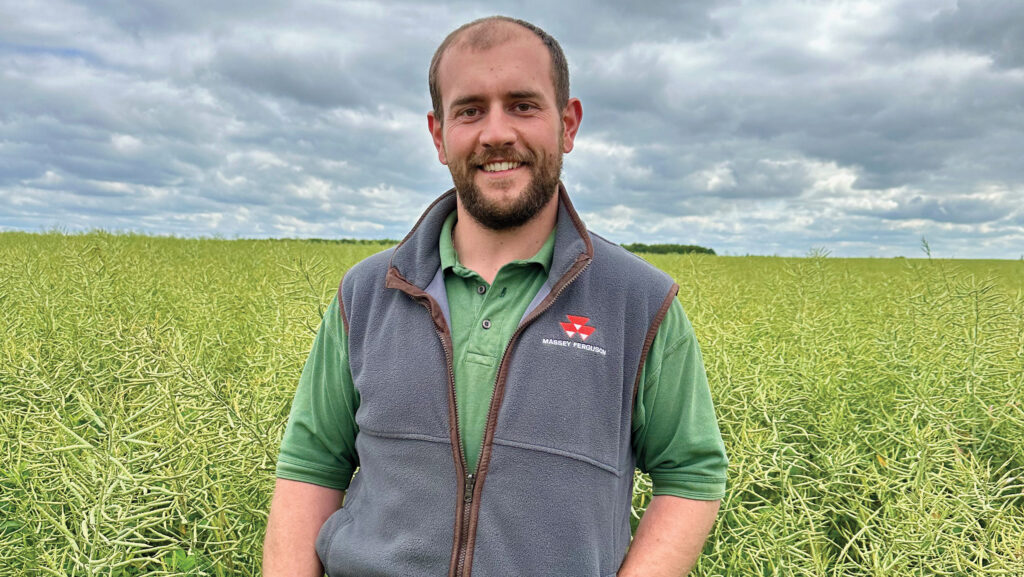
Sam Walker © Mike Abram
New approach
That led to a new approach from 2021. New crops entered the rotation – oilseed rape, whole crop rye, borage, chia, peas and linseed have all been tried to help replace the diversity lost with not growing the root crops.
Catch or cover crops are planted directly after harvest to keep living roots in the ground for as much of the year as possible.
“At the same time, we also decided we wanted to cut back on chemical use,” James says. With the help of Ben Taylor-Davies of RegenBen the farm no longer uses fungicides, insecticides, growth regulators or seed dressings.
“We’ve also cut back on synthetic nitrogen. Three years ago in cereals, we were down to about 120kgN/ha, last season that dropped again to 60-70kgN/ha, and in the current season it’s around 60kgN/ha.”
Cultivation is now limited to the use of a low disturbance Grange subsoiler, where compaction is a concern.
Farm manager Sam Baker has retrofitted a tank onto the implement to turn it into a “rip and drip” approach.
“So when we’re lifting the soil, we’re feeding liquid molasses, seaweed, fish hydrolysate into the soil to feed the microbes,” he says.
Otherwise, crops are direct drilled with a dual hopper Horsch Avatar fitted with a liquid applicator, which is used to apply extracts made from Johnson-Su compost and vermicast compost, along with seaweed and molasses at 50 L/ha, Sam explains.
“This season, we’ve seen distinct crop height differences where the extracts were applied and areas which didn’t receive them.”
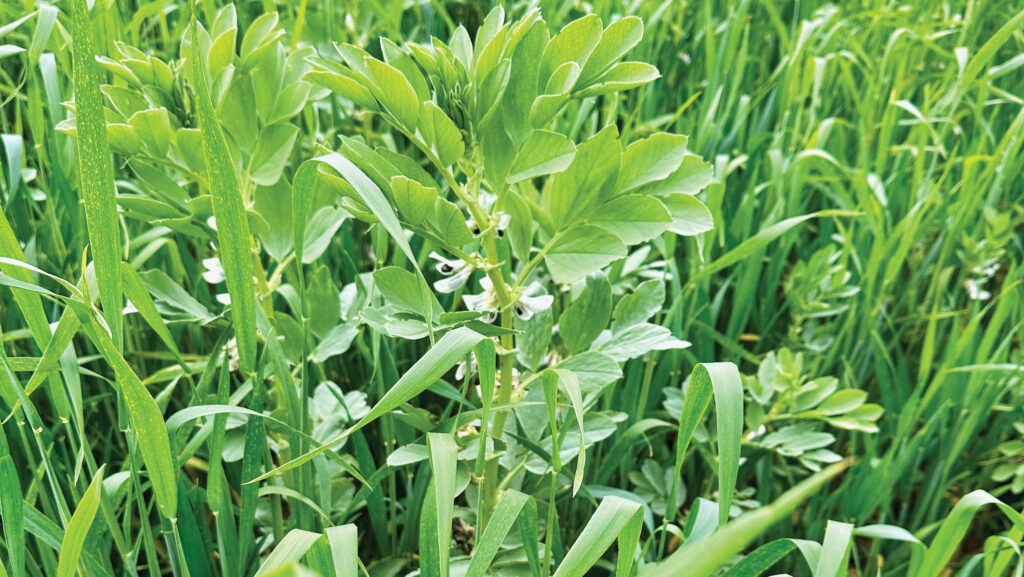
© Mike Abram
Better margins
While the changes have resulted in lower yields, James suggests margins are better, and he’s hopeful payments for various options under the Sustainable Farming Incentive will make up at least partially for the loss of Basic Payment Scheme funding for activities already happening on the farm.
“Last year we grew all our crops, both fixed and variable costs for under £600/ha, so anything beyond 3t/ha of wheat, for example, and we would make money.
“Our wheat blend yielded just under 7t/ha so we were happy. I heard of growers spending £2000/ha on their wheat crops last year – I would say they are the one’s taking the risks, not us.”
Importantly for James, he’s also noticing more wildlife with insect and bird life improving. In his soils, earthworms were the first sign of improvement.
“When we had the veggies and intensive tillage we wouldn’t find any earthworms in a spade of soil, now we’re seeing in some fields 15 worms, which is very positive. They are the first thing that recovers.”
The soils are also more resilient to weather. “We’ve all had lots of rain this winter, but on most of our land you could walk cereal crops the day after having 30mm – no sinking in, no runoff,” he says.
This year all cereal crops are being grown with a companion legume crop after growing beans and oats together last season worked well.
“It’s a fantastic way of mitigating pest and disease pressures – we’re not using companions specifically as a tool for that – but we’re just not seeing the same levels as previously.”
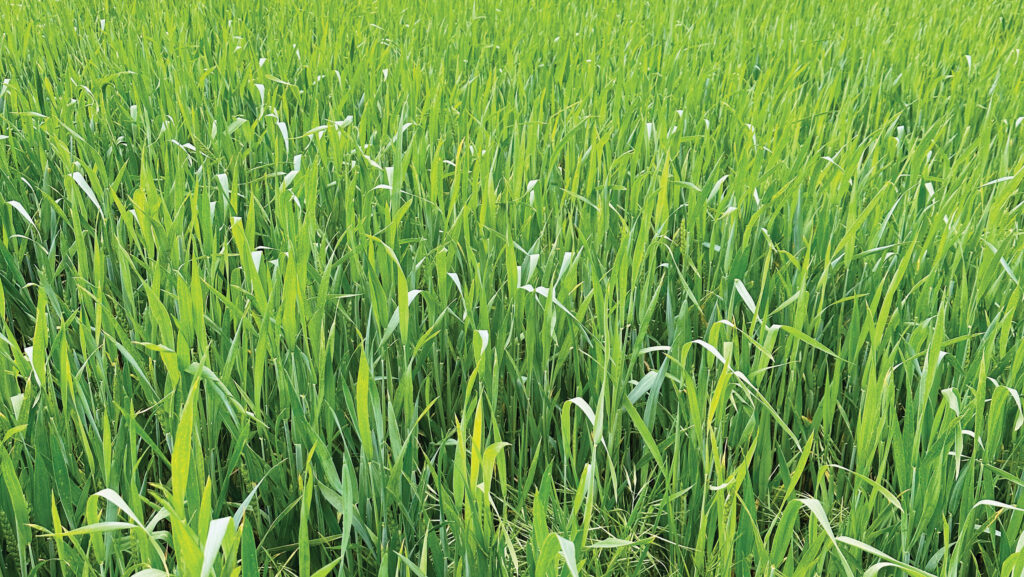
© Mike Abram
Wildfarmed
That includes wheat grown for Wildfarmed, where this year a blend of four winter wheat varieties, Nelson, Mayflower, Palladium and Edelmann was drilled in November with 40 kg/ha of beans using the Avatar.
If the crop makes 11% protein – a maximum of 80kg N/ha can be applied – Wildfarmed will pay £280/t for the wheat, plus a payment for the beans. Separation is carried out by Robin Appel on behalf of Wildfarmed.
James’ other wheat fields are also blends, including one of around 177 varieties, which includes various heritage varieties as well as some newer varieties, such as Graham, Skyscraper and Extase.
Using home-saved from last season, this year’s crop was drilled with 5kg/ha of vetch also in November.
The vetch was sprayed off with Broadway Star (pyroxsulam + florasulam) in the spring to prevent it competing too much with the wheat.
“It’s had no fungicides or insecticides and just two small doses of a nitrogen sulphur blend, and 20kg N/ha of a stabilised foliar N, with some sulphur, magnesium, fish hydrolysate and a carbon product,” James says.
“It will probably only get 70kg N/ha in total.”
Ideally it would have been grazed over winter, farm manager Sam Baker adds.
“But the growth didn’t justify putting sheep in.” Usually, all cover crops and winter crops are grazed through an agreement with a local sheep farmer.
“We did a trial in winter wheat a couple of years ago where the grazed wheat yielded 1.5t/ha better than neighbouring non-grazed fields with otherwise the same inputs,” James says.
Livestock
Livestock also has a place in the management clover understories in the rotation.
Last season he grew white clover alongside oilseed rape and vetch, which provided the entry for the wheat crop.
Grazing the residue hard with livestock before direct drilling the following wheat will reduce the amount of green material for slugs to attack, he suggests.
Most of the non-Wildfarmed wheat will end up as a feed – protein levels were only about 9% last year, perhaps not surprisingly in a blend including a decent proportion of feed varieties – but about 4t/year is being used by local baker, Wooster’s, to make a Knettishall Wild wholemeal sourdough.
The idea resulted from the patriarch of Wooster’s visiting the farm for one of James’ farm walks.
“He liked what we were doing and spoke to his son, and now they’re selling the loaves in their two shops locally and at a farmer’s market.”
To help with marketing of the bread, James has recently had the entire Wooster’s team on farm for a farm walk, so they can sell the story, he adds.
It’s not all plain sailing though. Sterile brome, perhaps helped by the wet autumn, winter and spring, is becoming a huge challenge in places, in both wheat crops and NUM3 legume fallows being grown as part of his SFI scheme.
“We’ve planted legume fallows in a few of our lightest land fields, where the soil was very degraded, and yields were poor.
“The legume fallows are a great way to build fertility and let the land rest, but there is quite a lot of brome in it.”
While topping should help prevent seed return, at least initially, he’s worried what state the land will be in in three years’ time when it comes back into the rotation.
In the wheat, he’s considering a return to shallow ploughing to help control brome, while growing spring wheat for Wildfarmed to give more opportunity to control the brome outside of the crop is another possibility, along with mechanical hoeing.
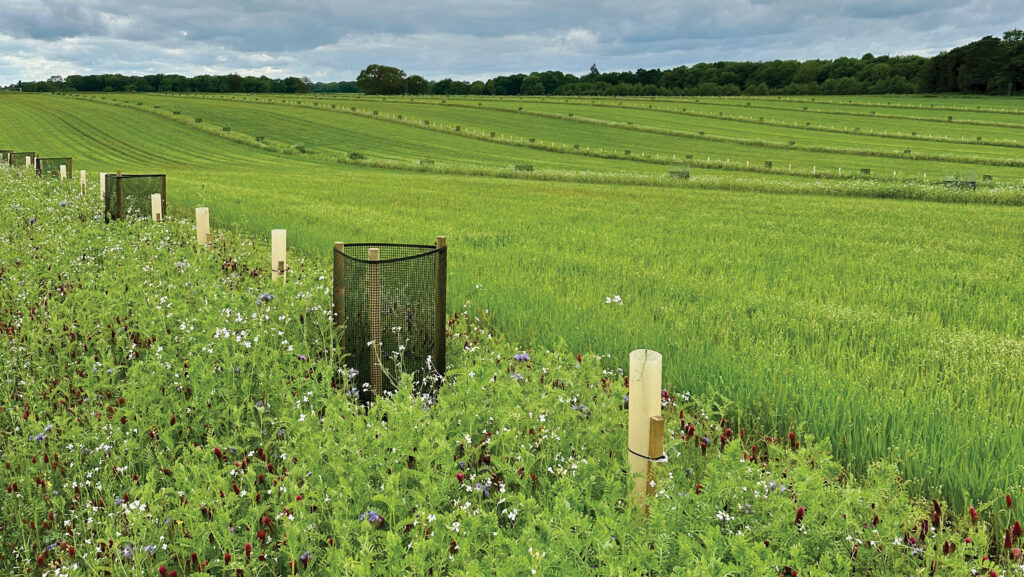
© Mike Abram
Agroforestry scheme implemented with Woodland Trust backing
An eight-row diverse agroforestry scheme has been set up on a 13ha field to increase in-field diversity in a relatively flat landscape, and ultimately provide another income stream for James Bucher’s farm.
Four rows on the field are planted with trees suitable for short rotation coppice together with some native standards, James says, while the other four are fruit and nut trees.
The trees have been planted within 4m flower-rich strips, with the cropped area spanning 24m in between.
Trees were sourced and paid for by the Woodland Trust, while the farm supplied the labour for planting.
“The short rotation coppice is predominately hazel with a few willows, while the native standards are oaks, limes, rowans, sweet chestnut and whitebeam,” James says.
Only apple trees have been planted in the other four rows so far, but the plan is to plant damson, pear, quince, plum, medlar, hazelnut and walnut trees in between the apple trees this winter.
“We’re looking to sell the fruits to a local farm shop, while the nuts might potentially go to Hodmedods.
“Some of the coppice will go into two boilers on the farm, and we will also use some hazel for composting and hedge laying.”
When the plan was designed, the proposed Sustainable Farming Incentive (SFI) agroforestry option appeared to suggest payments for low, medium and high-density agroforestry, but the SFI option for 2024 ultimately ended up with only very low- and low-density schemes qualifying for payment.
“This is not low density,” he says. “If there is a high density payment in future, we could be getting £8,000 income from this field before we put in a cash crop.”
James Bucher and Sam Baker were talking at a recent Base-UK farm walk.

